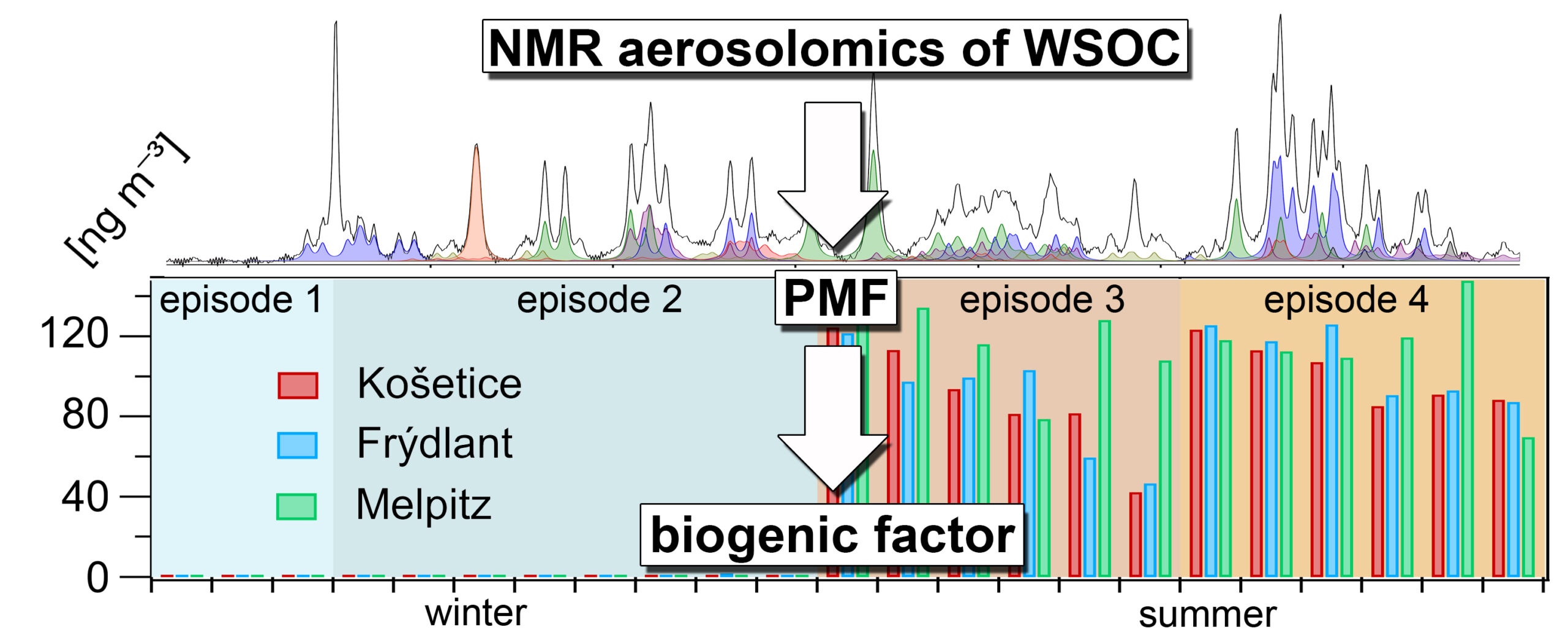PMF analysis of seasonally resolved organic aerosol from three central European background sites based on NMR aerosolomics data
NMR aerosolomics is a method that was developed and is still being evolved in the Research Group of Aerosol Chemistry and Physics. This method uses the technique of nuclear magnetic resonance (NMR) spectroscopy to determine the chemical composition of polar organic substances in aerosol particles using a database of NMR spectra of individual substances. Knowledge of the chemical composition of atmospheric aerosols is of great importance for understanding the processes that occur in the atmosphere. A study published in January 2024 in the journal Science of the Total Environment deals with the further development of this approach in combination with the method of aerosol source apportionment. This publication resulted from Czech-German cooperation with the Leibniz-Institut für Troposphärenforschung in Leipzig.
Using the NMR aerosolomics method, we analyzed samples of fine aerosol particles (PM2.5) from three stations in central Europe, specifically from Košetice (Pelhřimov district, Czech Republic), Frýdlant (Liberec district, Czech Republic) and Melpitz (Northern Saxony district, Germany), which were collected during the winter and summer of 2021. These stations represent the rural background of the Czech Republic and Germany respectively, and the question was how the composition of aerosol particles differs between summer and winter as well as among individual stations. Therefore, the goal of the analysis was to determine the chemical composition of these particles, with an emphasis on polar organic substances, which were identified and quantified 61 in total. These results were subsequently subjected to advanced statistical analysis methods, which revealed substantial differences in the composition of summer and winter samples of aerosol particles, as well as between winter samples from the Czech Republic and Germany. The entire work further headed to the question of whether it is possible to use the data obtained by the means of NMR aerosolomics for aerosol source apportionment utilizing the so-called positive matrix factorization (PMF). The answer was the identification of four sources of aerosol particles: biogenic, industrial biomass combustion, residential heating, and background. While biogenic sources predominated at all stations during the summer, in the winter the sources associated with combustion processes were the most abundant and their share was higher at the Czech sites. Determining the sources of aerosols is currently of great importance with regard to, among other things, current trends in environmental protection. The connection of NMR aerosolomics with PMF represents an alternative approach to aerosol source apportionment that may in the future be combined with other methods to obtain finer resolution of individual organic aerosol sources.
- Horník Š.*, Pokorná P., Vodička P., Lhotka R., Sýkora J.*, Arora S., Poulain L., Hermann H., Schwarz J., Ždímal V.: Positive matrix factorization of seasonally resolved organic aerosol at three different central European background sites based on nuclear magnetic resonance Aerosolomics data. Sci. Total Environ. 2024, 916(15 Mar), 170303. doi.org/10.1016/j.scitotenv.2024.170303
